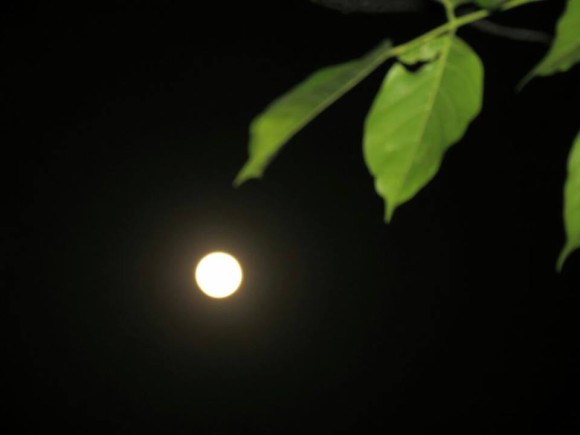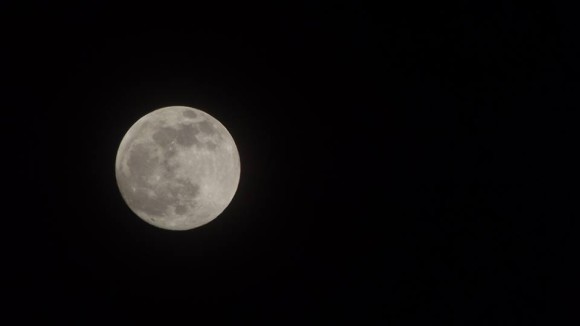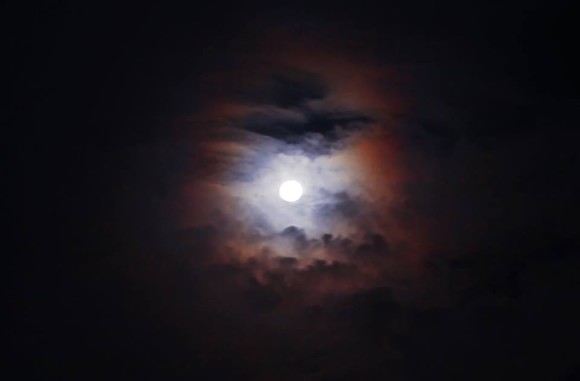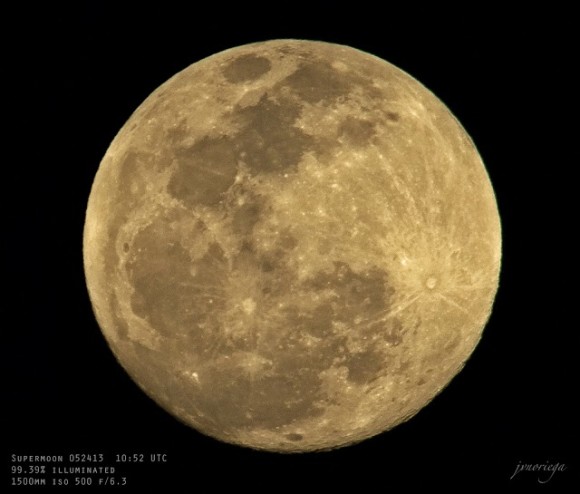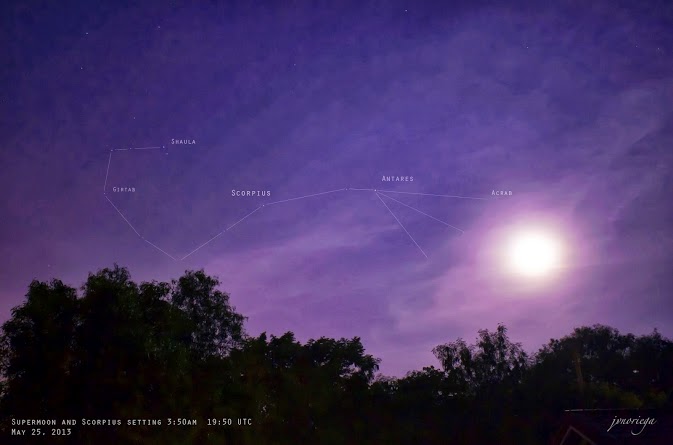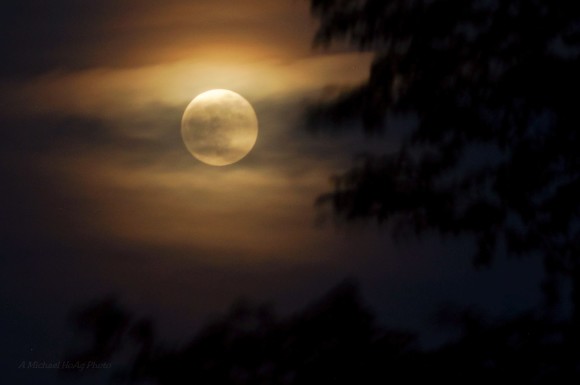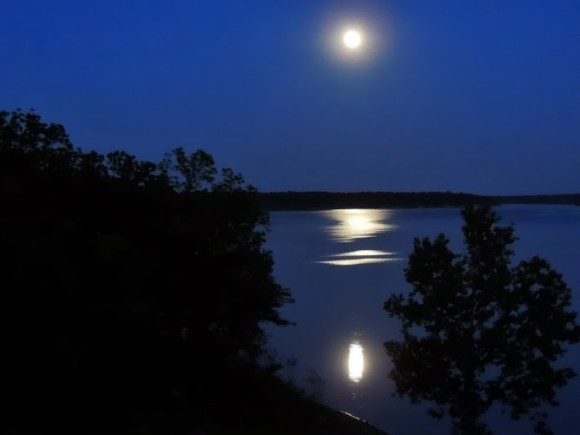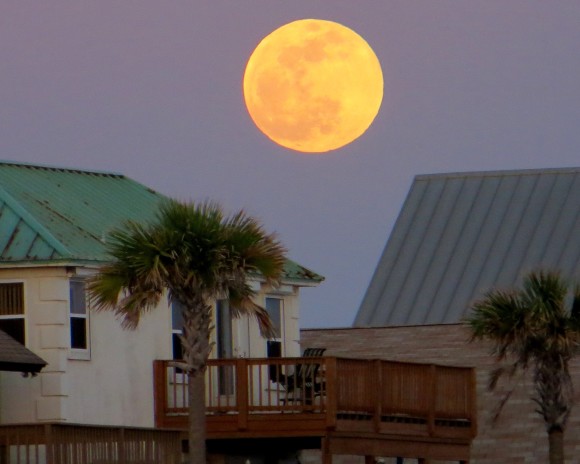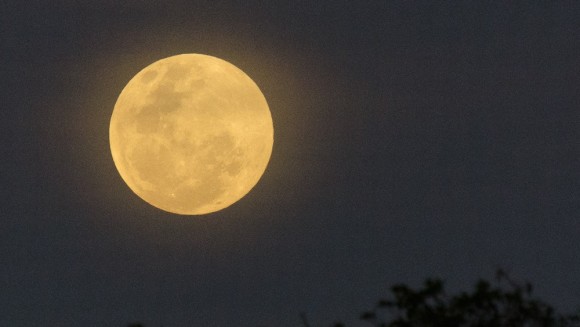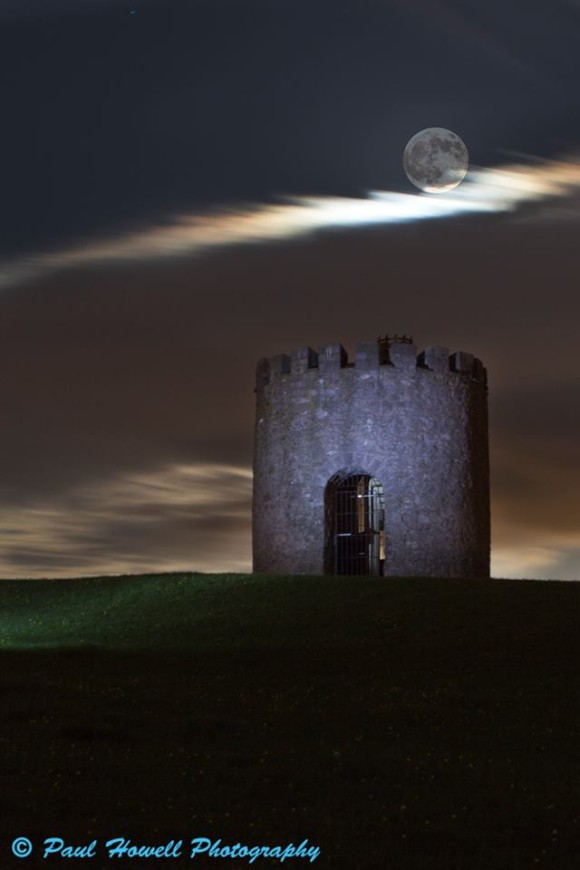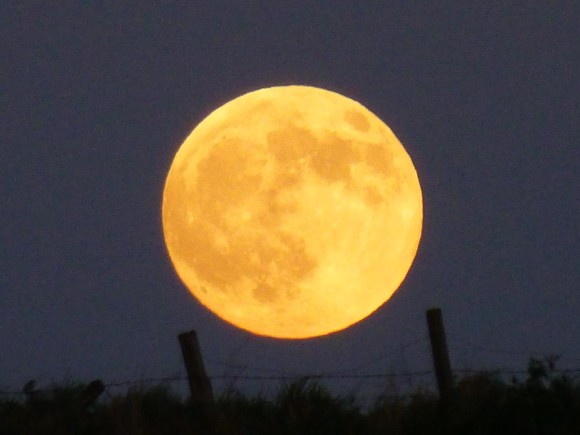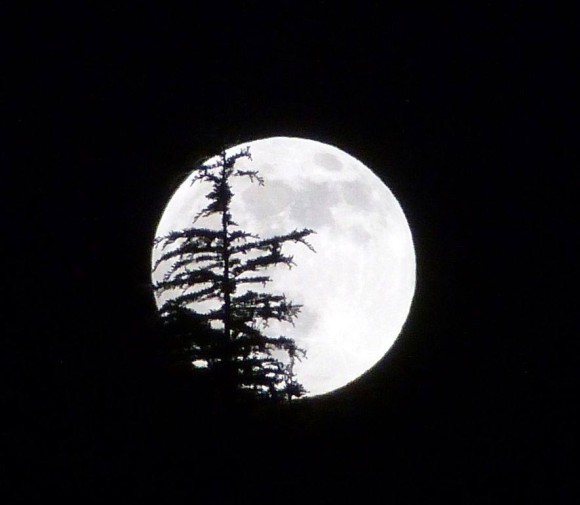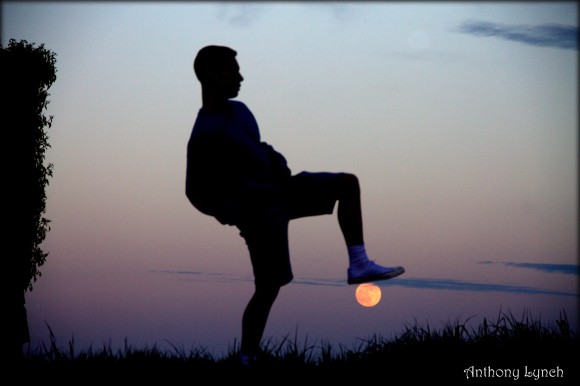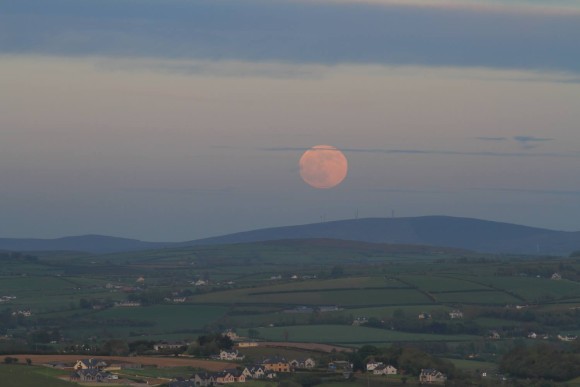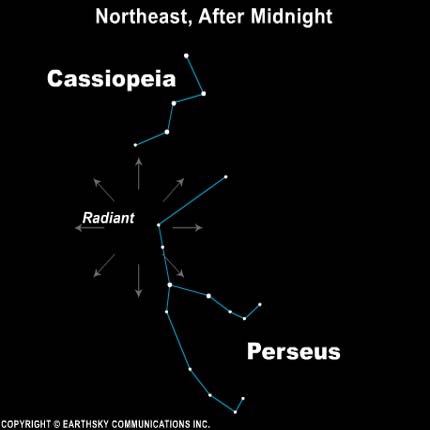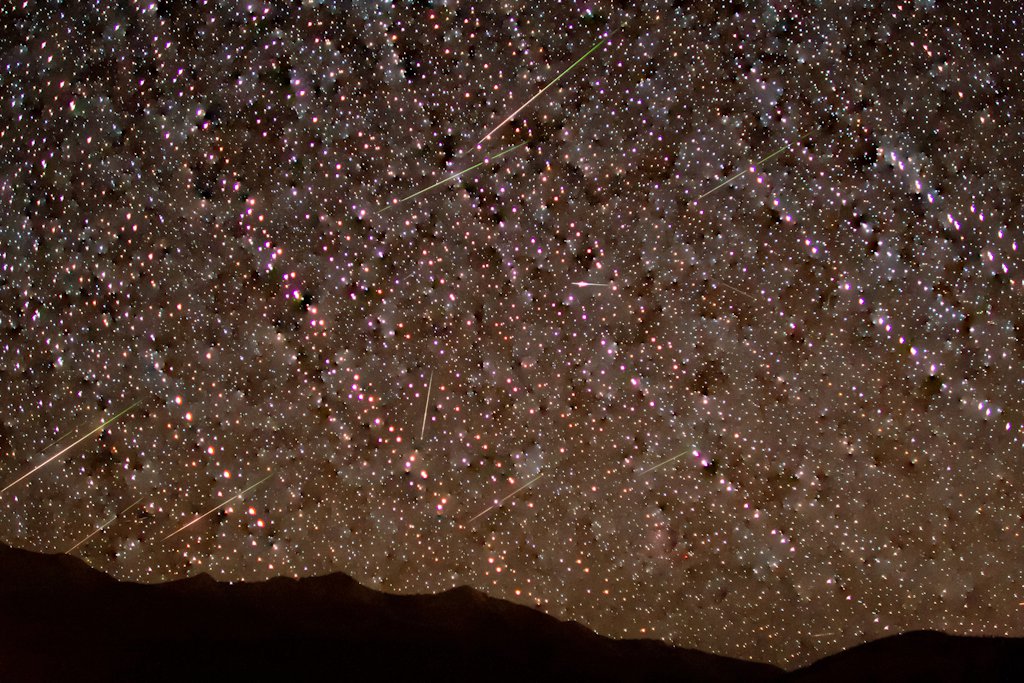The bright object near tonight’s moon in the early evening sky – August 10, 2013 – is the planet Venus. Then, between midnight and dawn, watch for the 2013 Perseid meteor shower – August’s famous shower of
shooting stars. People always ask which
direction they should watch to see a meteor shower. The answer is that any direction will do. It’s true that this weekend’s Perseid meteors appear to radiate from a single point in the sky. But you don’t need to look toward this
radiant point to see the meteors. Instead, the meteors will appear all over a dark night sky during the next several nights, between now and perhaps Tuesday morning (August 13), between midnight and dawn. Still, it’s fun to find the radiant. More about that below.
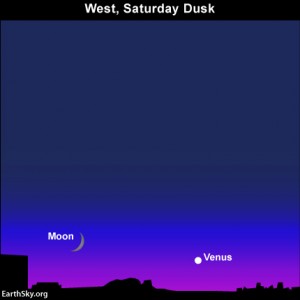
The waxing crescent moon and brilliant Venus appear low in the west at evening dusk, August 10, 2013.
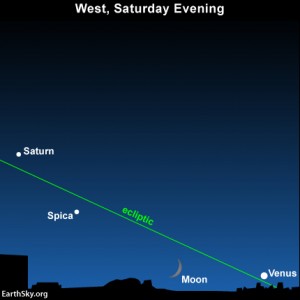
As dusk turns into darkness, look for the star Spica and planet Saturn higher up than the moon and Venus. The meteors will pick up in number after
Saturn sets at late evening.

The morning planets before sunrise in mid-August 2013. Jupiter will be easy to see in the predawn and dawn sky. Mars and Mercury will pose more of a challenge.
Before tonight’s meteor shower even begins, look for the waxing crescent moon plus the planets Venus and Saturn at dusk and early evening. The meteors won’t really fly in significant numbers until Saturn has already set by mid to late evening.
By astronomers’ best estimates, the night of August 11-12 (mornings of August 12) will probably feature the most Perseid meteors in North America. In Asia, the peak night might come later, on the night of August 12-13 (morning of August 13). But any clear night from here on out should be fine for watching this reliable summer meteor shower. Last year, observers under dark skies reported over 60 meteors an hour, according to the International Meteor Organization. Will you see that many tonight? Only way to find out is to look.
As evening deepens into late night, the number of meteors will start to increase. The intensity will pick up after midnight, and the greatest numbers of meteors typically bombard the sky in the dark hours just before dawn. A typical count is 60 an hour. You might see more. Plus the planets Jupiter and Mars will rise into the eastern sky before dawn.
Appreciably south of the equator, the count will be less – perhaps 10 to 15 meteors per hour. Also, at southerly latitudes, the first Perseids probably won’t appear until midnight or the wee hours of the morning. That’s because the constellation Perseus – the radiant point for the Perseid meteors – is a far northern constellation. Perseus rises earlier in the evening and climbs higher in the sky at northerly latitudes.
Mira the Wonderful, the famous variable star, may – or may not – be visible
That’s the constellation Perseus the Hero at the top of this post. It’s the reason this meteor shower is best between the hours of midnight and dawn. One way to think about it is this. The shower’s radiant point – the point in the sky from which the meteors appear to radiate – needs to be above your horizon before you can see the most meteors. At this time of year, the constellation Perseus ascends appreciably high in the northeast by about midnight and highest in the sky before dawn. The Perseid meteor shower is named for this constellation.
Do you have to be able to identify the radiant point, or the constellation Perseus, to see the meteors? No. The meteors will appear in
all parts of the sky – especially between midnight and dawn on the mornings of August 11, 12 and 13. If – just for fun – you do want to spot Perseus, look first for the W-shaped constellation Cassiopeia. The constellation Perseus is faint, but Cassiopeia is noticeable and can help you find it. If you do see a Perseid meteor, and trace its path backward, you will find that it radiated from a point in the sky within the boundaries of the constellation Perseus.
Double Cluster in Perseus: Two star clusters

View larger. | August 9, 2013 moon and Venus as seen by
EarthSky Facebook friend Cathy Emmett Palmer at Panama City Beach, Florida. Thank you, Cathy!
Many people look forward each summer to the Perseids. It’s a great time to go camping. This shower always peaks around this time of year, and in years when the moon is out of the sky, it reliably produces 50 or more meteors per hour at its peak at northerly latitudes, or an average of about one a minute.
Fortunately, in 2013, the thin
waxing crescent moon in the evening hours won’t intrude at all on the Perseid shower.
Bottom line: The bright starlike object near tonight’s moon is really a planet, Venus. You can also find Saturn this evening. Late night or between midnight and dawn, find a dark, open spot away from pesky artificial lights, sprawl out comfortably on a reclining lawn chair and enjoy the best nights of the Perseid shower. The meteors will probably fall most abundantly – from anyplace worldwide – from about 2 a.m. until dawn on Monday, August 12. But this weekend, through Tuesday morning (August 13), should feature good meteor displays, too.
EarthSky’s top 10 tips for meteor-watchers
August 2013 guide to the five visible planets
Looking for a sky almanac. EarthSky recommends…


